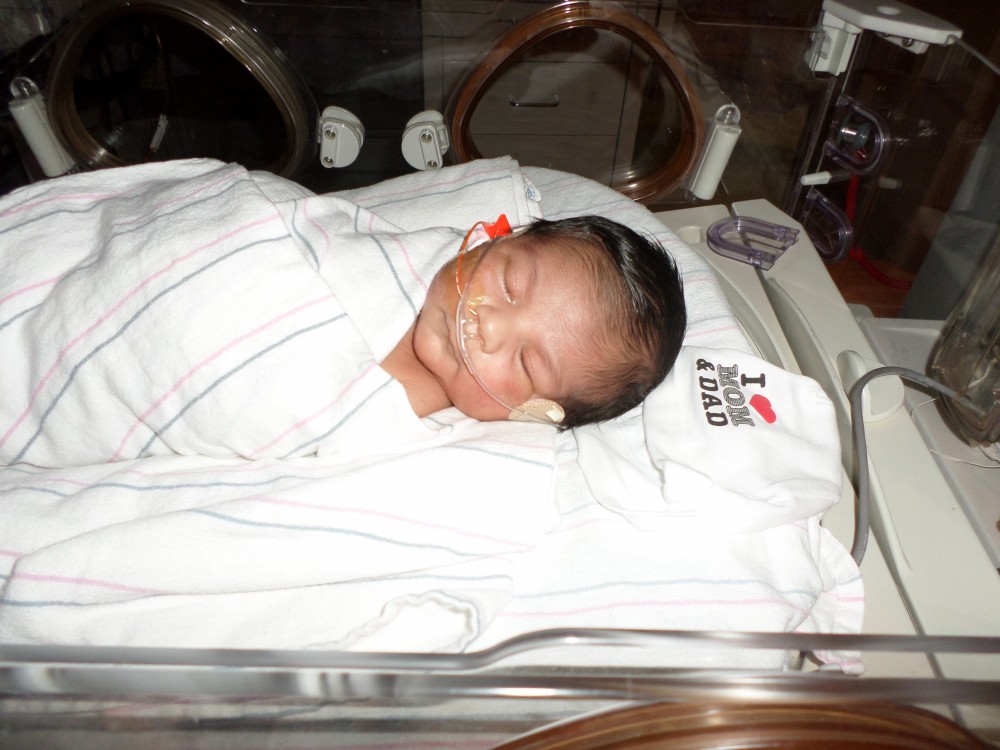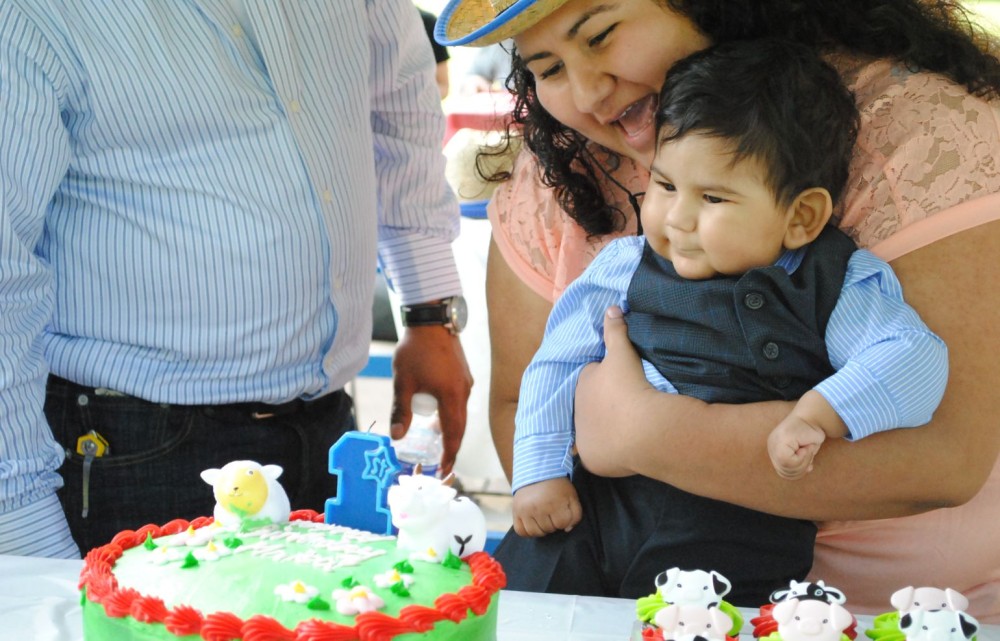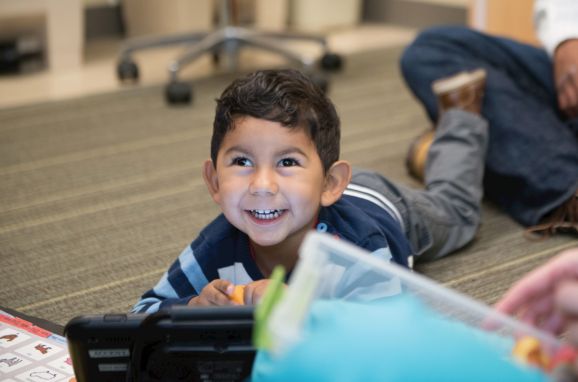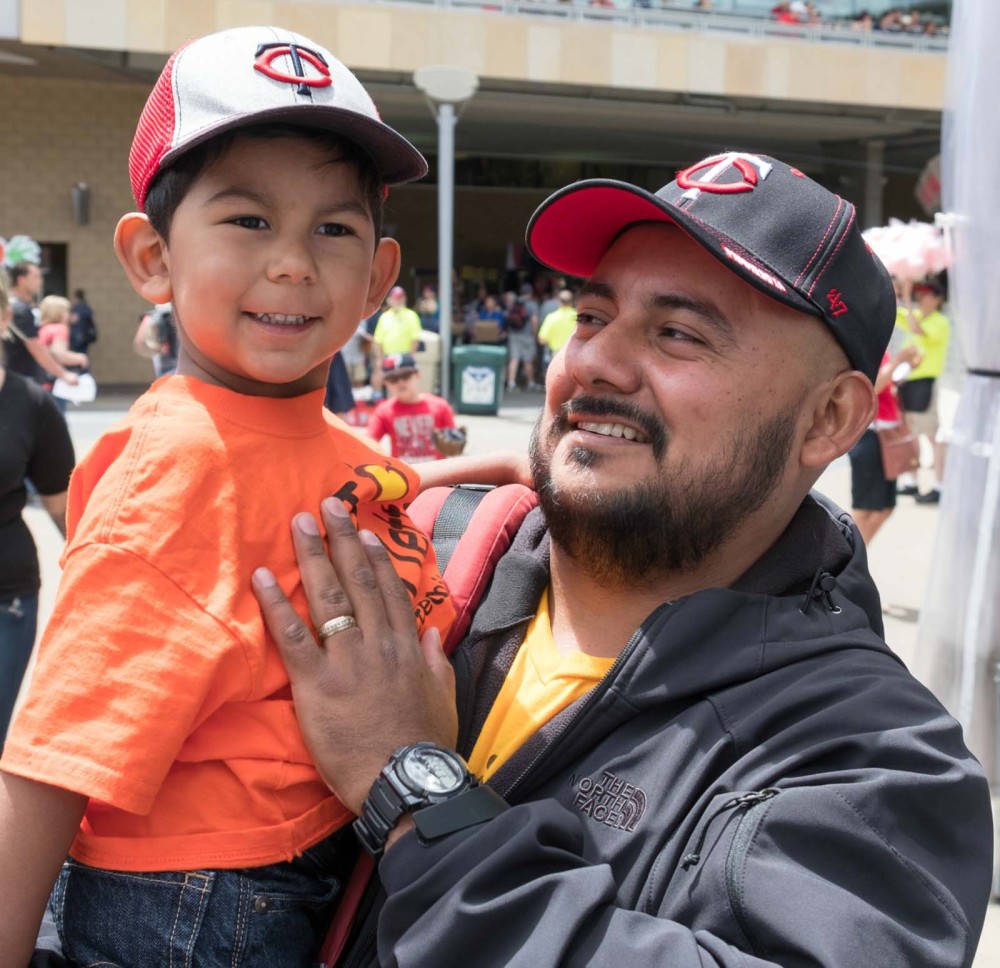"This is my son Mateo. He was born with a brain injury, and as he grew developed cerebral palsy, epilepsy, and was treated for infantile spasms. Mateo has faced challenges in his young life, but he is so much more than his illness, or what comes back on his test results. He’s a fighter, but he’s also a happy, goofy, loving child. Mateo is a miracle. Mateo is our miracle.
He brings so much joy to our lives, and hopefully some to yours as well.”
–Maria Gomez & Isidro Arcos, Mateo’s Parents
As he ambles down a long hospital hallway, smiling with every step and practically daring you to do the same, it can be pretty easy to forget that none of this was supposed to happen. Mateo Arcos was never supposed to walk.
When Mateo was born, he was diagnosed as having a severe case of hypoxic-ischemic encephalopathy (HIE), a brain injury caused by deprivation of oxygen and blood flow to the brain. Mateo was very ill and needed rapid medical intervention.
For Mateo, this required therapeutic hypothermia, a process by which his body was cooled down to 92.3 degrees, and kept there for the next 72 hours. The treatment slows the metabolic rate of the body, and has been shown to protect the brain from some of the aftershocks and cell death that can occur following an acute injury from lack of oxygen and blood flow.
His care team also screened for seizures with bedside brain wave testing, as early treatment of seizures is very important. Mateo’s testing was severely abnormal, and many electrical seizures were occurring.

After three days had passed, Mateo’s brain activity had improved. But as Gillette's specialists looked over his tests, signs for optimism were scarce.
Mateo’s MRI showed changes that suggested both hemispheres of his brain had been damaged significantly, and his EEG indicated a strong likelihood that he would have seizures in the future. It was also quite possible that Mateo would have severe cerebral palsy. He might never be able to walk, talk, or be able to learn in a significant way. Mateo’s family received news that is among the worst a family can get.
3-6 Months: the Complications of Cerebral Palsy
The complicated nature of cerebral palsy stems from the fact that it isn’t one condition. Really, it’s a group of conditions that are the result of brain damage or atypical brain development that happens around the time of birth or early in life.
Cerebral palsy isn’t a progressive condition, in the sense that the brain injury that causes it is an isolated event. That said, the repercussions of that event and the symptoms it causes may not be seen in the first few weeks of life, and more typically present in the first several months. It is very difficult to ‘wait and see’ when it comes to your child’s future.
However, when it came to Mateo, the results of his evaluation at his 3-month checkup were resoundingly positive.

In terms of his movement and how he was behaving socially, Mateo was right where you would expect a healthy 3-month-old to be. But at 6 months, things began to change. Mateo began to show signs of abnormal muscle tone consistent with cerebral palsy, and some developmental delays began to emerge.
Such developments are not uncommon for patients who experience a brain injury around the time of birth, which is why close monitoring during these key stages of development is so important. Mateo continued on medication to control his seizures and began working with therapists at Gillette to aid with his movement, feeding and speech.
9 Months: "Where'd he learn that?"
Around 9 months of age, Mateo’s parents noticed that he began to exhibit a strange new behavior. Periodically, he would bob his head to the side, and his eyes would roll back and become distant. At first, they thought it was a new mannerism he had picked up somewhere.
Two days later, the events became more frequent. The team at Gillette quickly arranged for Mateo to come in for an appointment. When the events rose to more than 100 times within the span of 15 minutes, his family brought him in immediately. There they would learn that Mateo had infantile spasms (IS), a rare seizure disorder.

Only 2,500 children are diagnosed with infantile spasms (IS) in the United States every year.
IS can be problematic for parents and medical professionals alike, as the symptoms can present in movements that seem harmless, but they are actually small seizures that can be subtle enough to miss. Early treatment of the condition is key, so Mateo’s parents recognizing his symptoms early played a major role in ensuring that he didn’t regress, and lose the developmental progress he had made.
Mateo was treated with adrenocorticotropic hormone (ACTH), a steroid therapy that requires very careful monitoring for potentially serious side effects. He had multiple EEG tests to monitor his progress. Mateo responded well to the treatment, and the spasms disappeared. He stayed on track with his development—gaining new skills day after day.
Today, Tomorrow and Forever
Mateo is now 2 years old. He does have cerebral palsy, and some difficulty in speech and development. Yet, he is walking, talking, laughing, and learning new things. He is working hard in his therapies, and blossoming in ways never expected in the dark days of his acute injury. He has also beaten one of the worst seizure problems of early childhood.
While there are many days yet to come, and challenges still lie ahead for Mateo, he and his family—and his team at Gillette—will be there to meet them together.

This story was originally posted in 2016. Mateo is now 7 years old. He's an excellent big brother for his two younger siblings and is still working hard in his therapy appointments. All is well.
Get Gillette Stories in your inbox!
Stay “in the know” with our Gillette Stories! Receive the latest stories and news from Gillette delivered straight to your inbox..
 Home Page
Home Page



